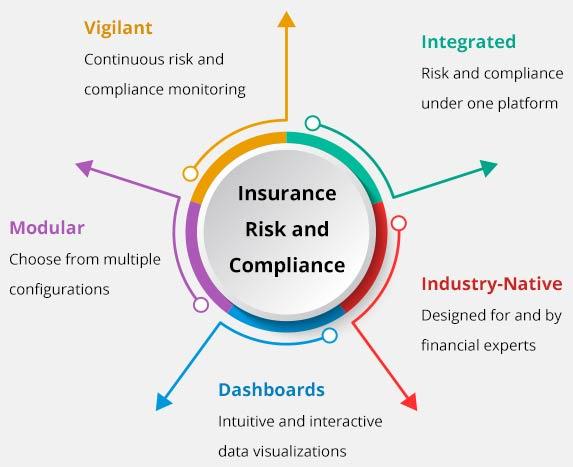In a world characterized by unpredictability, where the only constant is change, the importance of insurance risk management emerges as a beacon of stability. Navigating the complex landscape of potential hazards—be they natural disasters, market fluctuations, or technological advancements—requires a delicate balance of foresight, strategy, and adaptability. The art of insurance risk management stands at the intersection of analysis and intuition, offering tools and methodologies that empower individuals and organizations to not only protect their assets but to thrive amid uncertainty. This article delves into the intricate dance of risk assessment, mitigation strategies, and proactive planning, guiding you through the essential principles and practices that define effective insurance risk management in today’s dynamic environment. Join us as we explore the nuances of this critical field and uncover the strategies that can turn uncertainty into opportunity.
Table of Contents
- Understanding the Landscape of Risk in Insurance
- Strategies for Assessing and Quantifying Risk Factors
- Building Resilience Through Tailored Insurance Solutions
- The Role of Technology in Transforming Risk Management Practices
- In Conclusion
Understanding the Landscape of Risk in Insurance
In the ever-evolving world of insurance, understanding the various elements of risk is paramount to success. Risks in insurance can be categorized into several types, each presenting unique challenges and opportunities. Key factors influencing these risks include:
- Environmental Factors: Natural disasters like floods, hurricanes, and wildfires can dramatically impact claims.
- Economic Trends: Fluctuations in the economy can lead to changes in consumer behavior, affecting underwriting processes.
- Regulatory Changes: New laws and regulations can alter the risk landscape, requiring insurers to adapt swiftly.
- Technological Advancements: Innovations can either mitigate risk through better data analytics or introduce new vulnerabilities.
To effectively navigate these risks, insurers employ a plethora of strategies, often visualized through risk matrices that help prioritize risk assessment and response. A sample risk assessment matrix is as follows:
| Risk Factor | Likelihood (1-5) | Impact (1-5) | Total Score |
|---|---|---|---|
| Natural Disasters | 4 | 5 | 20 |
| Cybersecurity Threats | 3 | 4 | 12 |
| Market Volatility | 2 | 4 | 8 |
This table highlights key risks and their potential impacts—enabling insurers to prioritize their response strategies and allocate resources more effectively.
Strategies for Assessing and Quantifying Risk Factors
Assessing and quantifying risk factors in insurance requires a comprehensive approach that blends qualitative insights with quantitative data. One effective strategy is to utilize historical data analysis, which involves evaluating previous claim trends and loss experiences. By analyzing past incidents, insurers can identify patterns that may predict future risks. Additionally, adopting scenario analysis allows management to envision potential future situations and their impacts on the business. This method encourages the exploration of best-case, worst-case, and most likely scenarios to inform decision-making.
Moreover, employing risk assessment models can significantly enhance the quantification of risk factors. These models may utilize advanced statistical techniques and machine learning algorithms to predict the likelihood of various risks and the potential severity of losses. Insurers should also consider integrating expert judgment into their assessments, gathering insights from industry experts to refine their understanding of emerging risks. To visualize the interplay of different risk factors, an assessment matrix can be particularly useful:
| Risk Factor | Likelihood | Impact |
|---|---|---|
| Natural Disasters | Medium | High |
| Cybersecurity Breaches | High | Medium |
| Regulatory Changes | Low | High |
Building Resilience Through Tailored Insurance Solutions
In today’s unpredictable landscape, tailored insurance solutions play a pivotal role in strengthening individuals and businesses against a myriad of risks. By acknowledging the unique circumstances faced by each client, insurance providers can craft personalized policies that effectively address diverse exposures. This custom approach not only aids in safeguarding assets but also fosters a sense of confidence and security, allowing clients to focus on their goals without the looming anxiety of potential setbacks. The ongoing dialogue between insurers and clients is essential, ensuring that adjustments can be made as circumstances evolve.
To further enhance resilience, a comprehensive analysis of the following factors is essential when designing insurance solutions:
- Risk Assessment: Identifying potential vulnerabilities and threats.
- Coverage Flexibility: Adapting policies to align with changing needs.
- Financial Stability: Ensuring clients have adequate resources for recovery.
- Industry-Specific Needs: Recognizing unique challenges in various sectors.
These tailored solutions often come in the form of specialized policies that cater to specific industries or exposures, exemplified in the table below:
| Industry | Specialized Coverage |
|---|---|
| Technology | Cyber liability insurance |
| Healthcare | Malpractice insurance |
| Construction | Workers’ compensation insurance |
| Hospitality | Business interruption insurance |
The Role of Technology in Transforming Risk Management Practices
As businesses navigate the increasingly complex landscape of risk management, technology emerges as a pivotal force, reshaping traditional practices into dynamic and responsive frameworks. Data analytics plays a crucial role, enabling organizations to sift through vast amounts of information to identify vulnerability patterns and emerging threats. This allows risk managers to develop predictive models that showcase potential future scenarios, allowing for proactive measures rather than reactive solutions. Moreover, the incorporation of artificial intelligence into risk assessment processes enhances decision-making accuracy, leveraging machine-learning algorithms to refine predictions and improve risk profiles, ultimately leading to more informed insurance underwriting.
Additionally, advancements in blockchain technology offer unprecedented transparency and security in insurance transactions, mitigating issues such as fraud and unauthorized access to sensitive data. By creating immutable records, blockchain can streamline claims processing and policy issuance, thereby increasing trust among stakeholders. The role of cloud computing further amplifies these innovations, providing scalable resources that enable real-time collaboration and data sharing across diverse teams and geographies. As companies embrace these technological innovations, they are not only enhancing their risk management frameworks but also fostering a culture of resilience that can adapt to the unpredictable nature of today’s market.
In Conclusion
In a world where uncertainty is the only certainty, mastering the art of insurance risk management becomes not just a strategic advantage but a survival skill. As we’ve explored, navigating the complexities of risk requires a delicate balance between foresight and flexibility, pushing us to rethink our approaches and priorities continuously.
From understanding the intricacies of policy structures to embracing the evolving landscapes of technology and regulation, one truth stands out: the ability to adapt is paramount. Insurance risk management is not merely about mitigating losses; it’s about crafting resilient frameworks that enable individuals and organizations to thrive amid chaos.
As we conclude this exploration, remember that uncertainty, while daunting, also presents opportunities. By harnessing the principles of effective risk management, you can transform potential pitfalls into stepping stones for progress. Armed with knowledge and a proactive mindset, you are now better equipped to embark on your own journey through the ever-shifting terrain of risk. Embrace the challenge, and let the art of insurance risk management guide you toward a more secure future.




![Options Trading [All-in-1]: 34 Techniques, Tactics… Options Trading [All-in-1]: 34 Techniques, Tactics…](https://m.media-amazon.com/images/I/51sUclZ696L.jpg)
